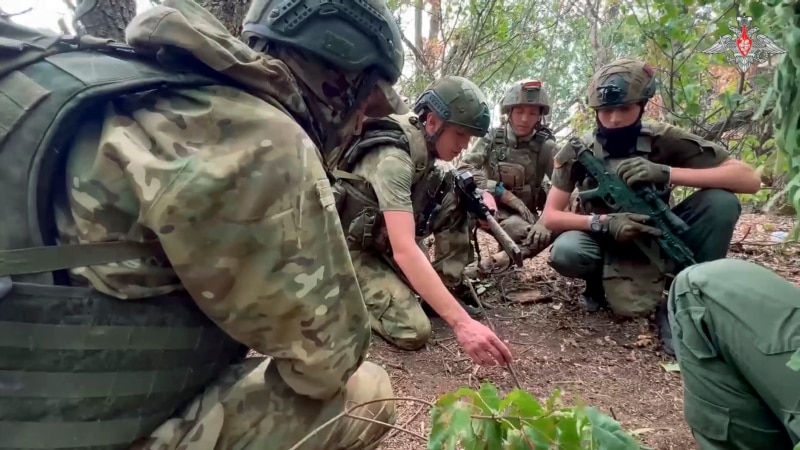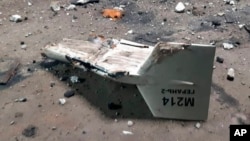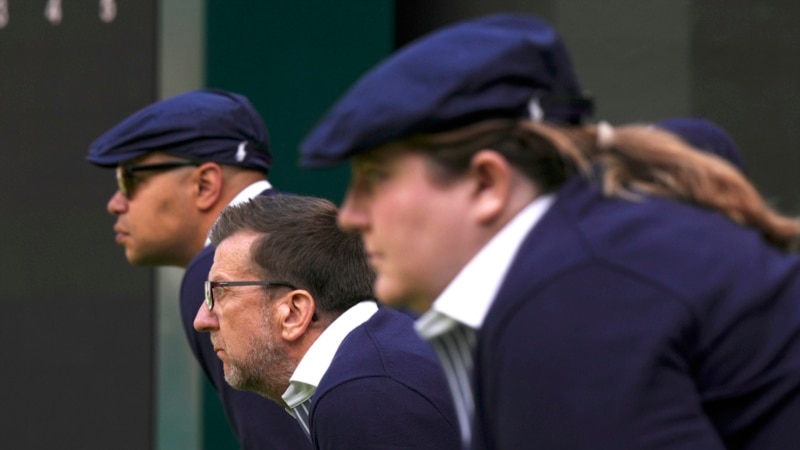Neither rising death tolls nor plunging temperatures are likely to change the trajectory of Russia’s war against Ukraine, according to senior U.S. officials charged with supporting Kyiv’s fight against Moscow’s forces.
The officials, briefing reporters Wednesday on the condition of anonymity to discuss battlefield developments, said fighting over the past several weeks has resulted in only minor changes to the front lines, with few indications Russia is making any adjustments.
“It’s an attritional strategy,” said a senior U.S. military official. “It’s kind of the Russian way of war that they continue to throw mass into the problem.”
That willingness to try to overwhelm Ukrainian positions with sheer numbers has cost Russia’s military, according to the latest U.S. military assessments.
The U.S. estimates Russian forces have suffered 600,000 casualties, killed and wounded, since Moscow first launched its invasion of Ukraine in February 2022 — a toll that U.S. officials said surpasses the number of Russian casualties in any conflict since World War II.
September has been especially costly, with Russia sustaining more casualties last month than in any other month of the war, officials said.
Russia’s military has also suffered in other ways.
Senior U.S. officials estimate Ukraine has destroyed or damaged more than 30 medium to large Russian ships stationed in the Black Sea, forcing Russia to relocate its Black Sea fleet. Ukraine is also thought to have destroyed more than two-thirds of Russia’s prewar tank inventory.
“[It is] forcing the Russian military to dig into Soviet-era stockpiles and fuel tanks from World War II,” said a senior U.S. defense official.
And then there are the Ukrainian drone attacks on Russian ammunition depots, believed to have destroyed hundreds of thousands of Russian and North Korean-made rounds.
U.S. officials said the damage would likely slow delivery of ammunition and artillery rounds to the front lines.
Still, they warned, the Kremlin appears undeterred, even it means more Russian casualties.
“Russia does continue to devote significant amounts of resources and … lives toward a grinding campaign, redoubling its efforts in the east,” said the senior defense official.
“Russia has also demonstrated time and time again a willingness to do whatever it takes to attempt to force the Ukrainians to capitulate, including purposely targeting Ukrainian civilians and critical infrastructure.”
For now, senior U.S. officials assess that Russian President Vladimir Putin has managed to avoid calling for a mass mobilization, like the call-up of some 300,000 reservists back in September 2022, thanks in part to pay increases for Russian volunteers. But just how long Putin can sustain Russia’s efforts without new troops is not clear.
As for Ukraine, senior U.S. officials point to the country’s success with its domestically produced drones and even its offensive into Russia’s Kursk region as reasons for hope.
“My assessment is that the Ukrainians will be able to maintain their position in Kursk for some amount of time, here into the future,” said the senior U.S. military official. “Several months and potentially beyond.”
The official said Ukraine’s military leadership appears to be looking at the big picture.
“Certainly, they’re focused on how they get through the winter, but they’re thinking a little bit longer term about how they set conditions for success next year,” the official said.
“The Ukrainians are thinking forward to 2025,” the U.S. official added. “That includes things like ensuring that the additional brigades can come online as they increase their recruitment, as they get better equipment and training, reconstituting brigades that they’re cycling off the front line and really building up their combat power for the future.”
www.Megalopoles.online




